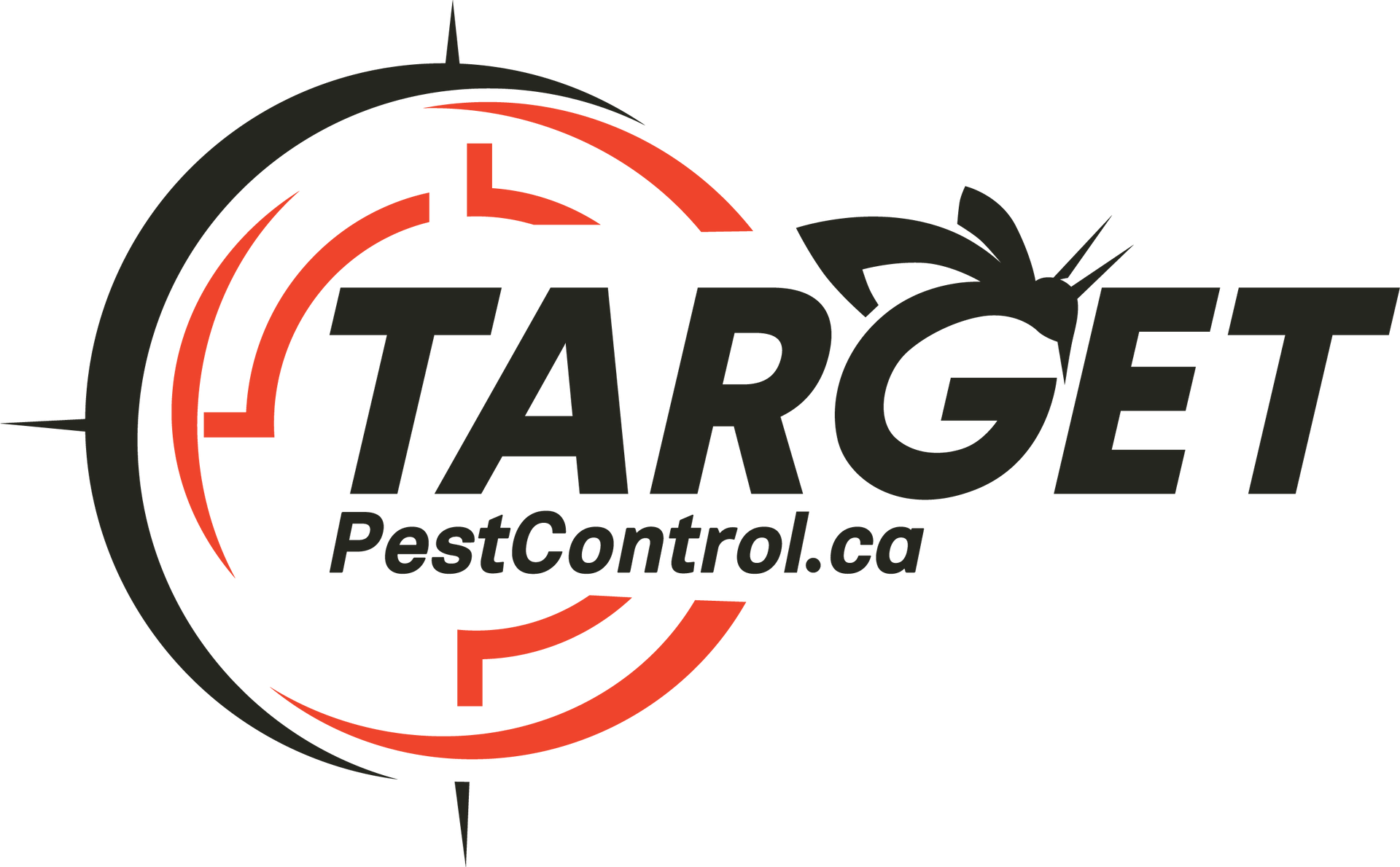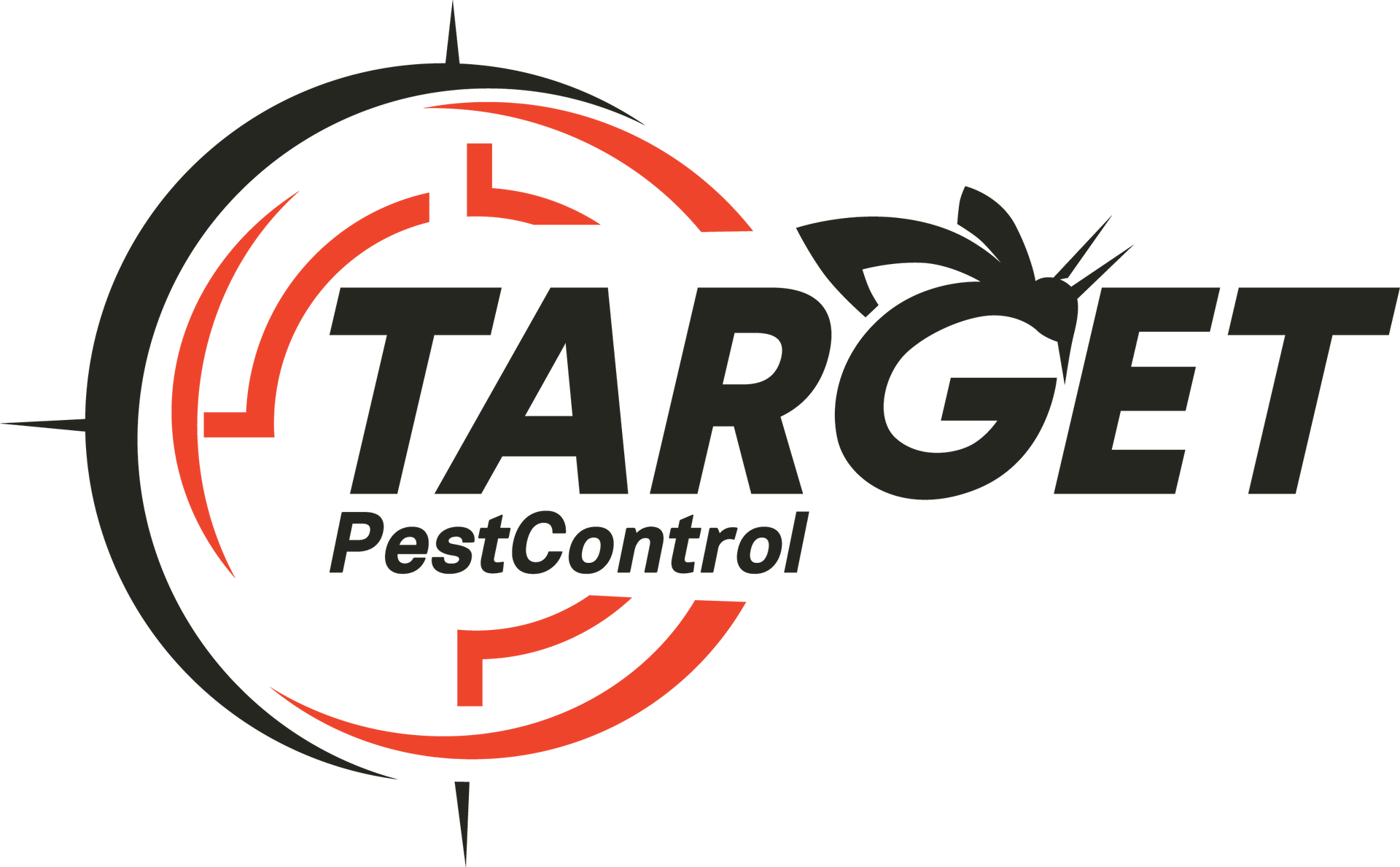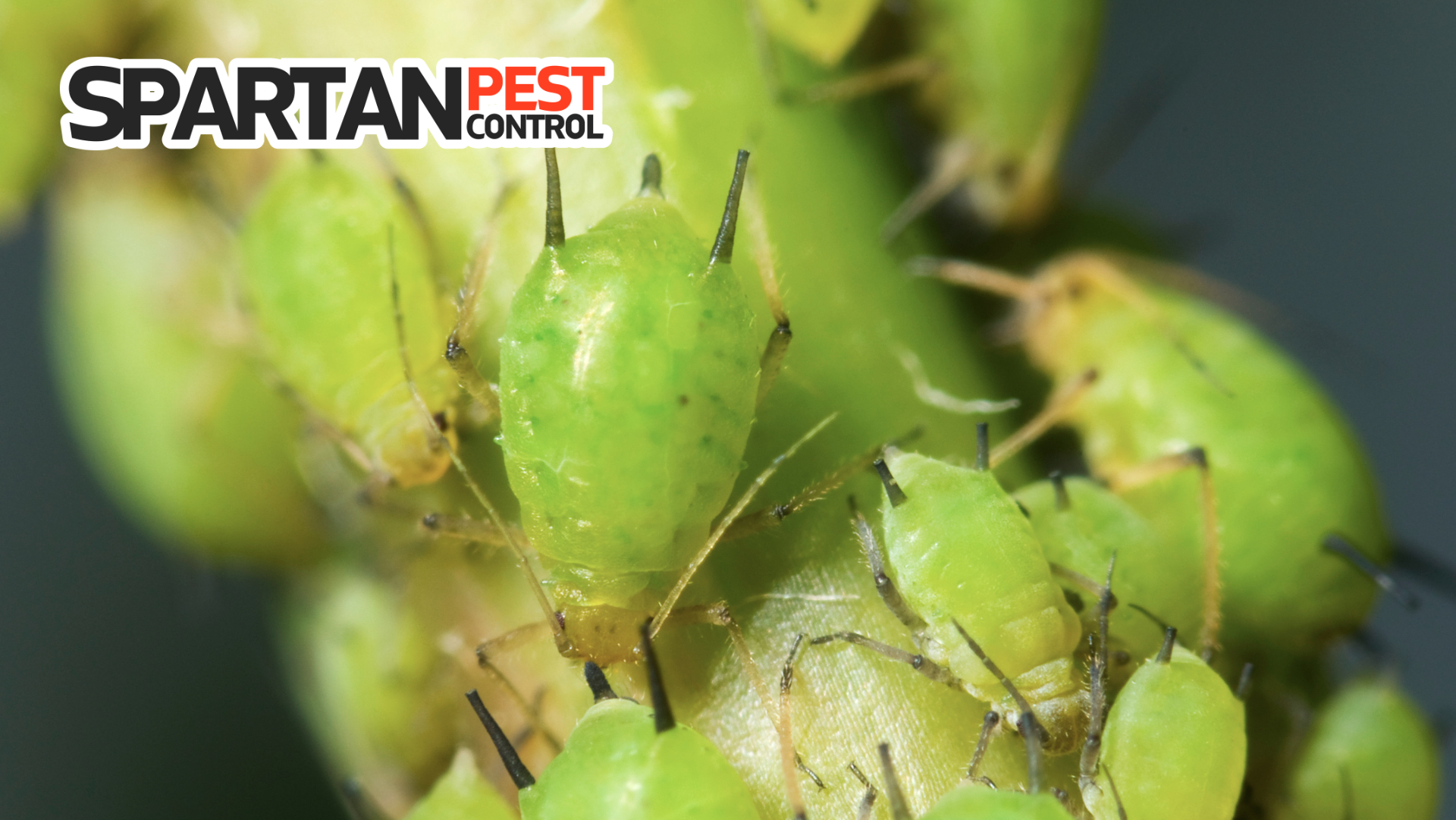My name is John Target, owner and operator of Target Pest Control. We are located in Calgary, Alberta and I have over 18 years of experience in the industry.
Get In Touch!
Phone Number:
Email Us:
Phone Number:
Send An Email:
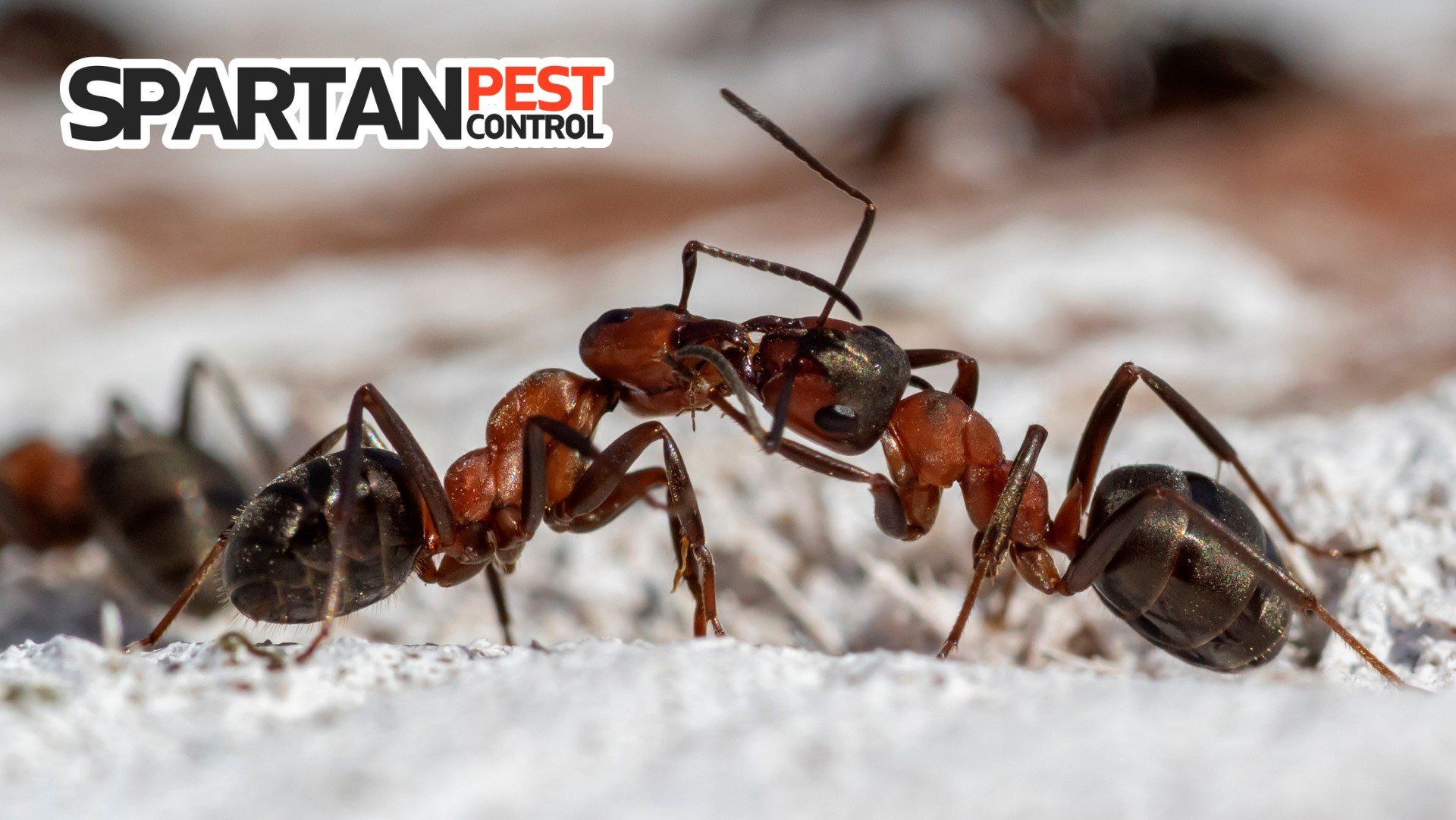
What are Thatching Ants?
Thatching ants (Formica obscuripes) are a common ant in Western North America. They are also sometimes called mound ants. Thatching ants are often distinguished from other ants by their large thatched nests and can have large colonies with up to 40,000 workers in a single nest. While their nests are unsightly, they are generally considered helpful. They eat other ants and aerate soil. However, they also have a painful bite.
What Do Thatching Ants Look Like?
Thatching ants are distinctly colored with black and red. Usually, their head is red while their abdomen is black. However, some thatching ants are all black. They are a medium-sized ant at 4.8 mm long and have a distinctly narrow waist with a notch at the top of their thorax. Thatching ants have three distinct segments. The head is the first circular segment of their body. It contains their two eyes, large strong jaws, and two bent antennae. The antennae are blunted at the ends. The second circular section is the thorax which contains their six legs, each leg has a small claw at the end. Between their thorax and abdomen is a small segment called a node. Thatching ants have one node that is slightly angled. Their waist appears very narrow and have a thick abdomen (also called a gaster) with a stinger.
Thatching ant eggs are white or cream colored and very, very small. They are about the size of the period at the end of this sentence. Ant larvae are white and grub-like, have no legs and cannot move very far. As for ant pupae, they look like white adult ants, but their legs and antennae are curved in towards their bodies.
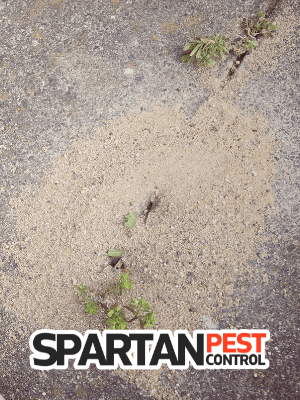
Where Do Thatching Ants Live?
Thatching ants live in many different habitats, but they prefer drier areas such as grasslands and prairies. They also live in meadows and mixed forests. They frequently build nests at the edge of meadows or open areas. They also build mounds around existing structures such as fallen logs. Thatching ants use plant material for nests. This includes twigs, grasses, and pine needles. Their nests tunnel into soil below and around the mound and can be as large as 12 inches tall, 3-feet across, and 5-feet deep. While they may venture inside for food, they will not make a nest indoors.
What Do Thatching Ants Eat?
Thatching ants are omnivores, but they eat many insects such as grasshoppers, beetles, and other ants. They often scavenge dead insects but will take them alive as well. They also collect liquid from animal and insect carcasses. Besides insects, they eat seeds, nectar, and plants. Here’s and interesting fact: Thatching ants are also farmers! They keep colonies of aphids for the honeydew that they produce. Honeydew is a sweet liquid excreted by aphids. The ants will run their antenna over the aphids to “milk” them and keep the aphids in the nest over winter, moving them onto plants in the spring and summer.
How Fast Do Thatching Ants Reproduce?
Thatching ants generally reproduce once a year. In spring, the winged males and females, called swarmers, take flight and mate. After a nuptial flight, the male dies. The female will either build a new nest or return to the old nest. Each nest often has two or more wingless females laying eggs at any given time. The first eggs are laid around April. The last around August. The eggs will be cared for by workers for around 23 to 53 days before they hatch into larvae. After hatching, the legless larvae will be fed for another 7 to 33 days. Then, they pupate. Ants stay in the pupal stage for 31 to 93 days before emerging as adults. Thatching ants do not reproduce in fall and winter as they often hibernate and the brood chamber will remain empty until the following spring arrives.
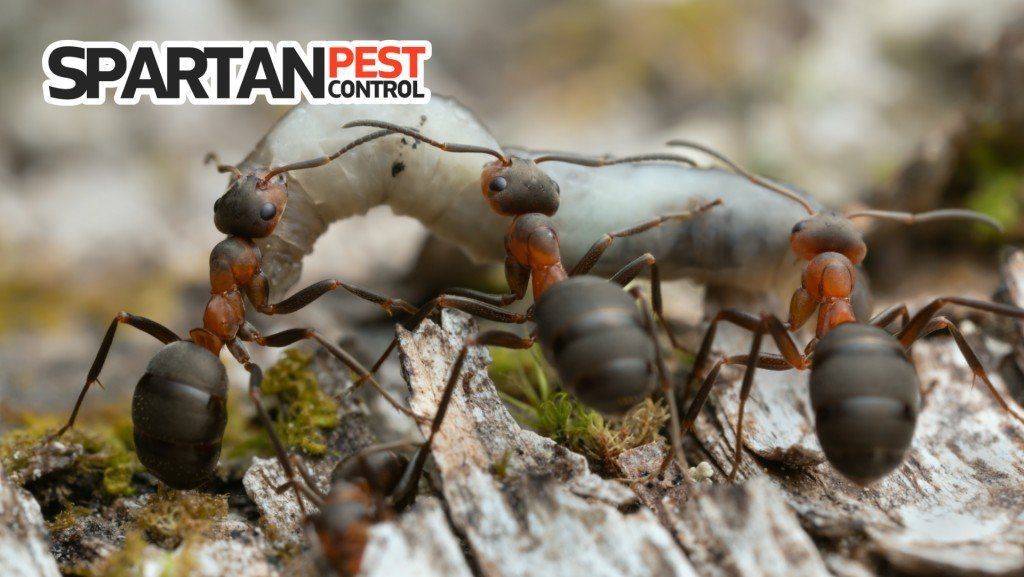
What are the Signs of a Pavement Ant Infestation?
There are two main signs of a thatching ant infestation: ants and nests. Thatching ants, like all ants, follow pheromone pathways to and from their nests. Workers will travel to and from the nest frequently to get food and materials. Thatching ant nests have up to 40,000 workers inside and are hard to miss. Remember, most thatching ants are red and black. If unsure about the type of ant, look at the nest, their nests are distinct in both size and materials used to build them.
Thatching ant nests are large and are easily visible. They are a combination of soil and plant materials – mainly grasses. They look similar to a thatched roof. The nests are often built around an existing structure such as a home’s foundation or a rotten log.
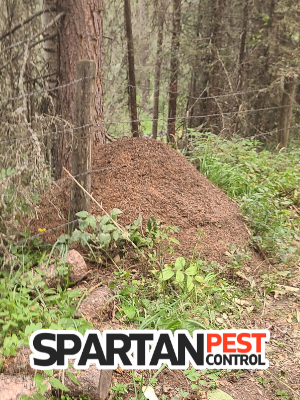
What Problems Do Thatching Ants Cause?
While their nests are unsightly, thatching ants are often seen as beneficial to the environment. They aerate the soil and eat other harmful insects. However, they are still pests. They can bite, sting, and spray formic acid. Their bite doesn’t always break the skin, but it is painful. In addition, they can spray formic acid into the bite. This acid will cause stinging and even blistering. Multiple bites can be quite painful.
Thatching ants can also harm vegetation. They use formic acid to kill plants to use in their nests. This can cause discoloration or localized plant death. They will also eat the buds off of apple trees and can kill seedlings.
How Do You Treat a Thatching Ant Infestation?
The most important part of treating a Thatching ant infestation is personal protection. Thatching ants can bite and sting. Before tackling an infestation, put on long pants, boots, gloves, and a long-sleeve shirt. Secure the pants over the boots with rubber bands or tape. This will prevent ants from climbing into your clothing and biting your skin. Wear long sleeves and gloves secured in the same manner as the pants. When using a shovel, place a plastic bag below where your hands rest.
One of the main ways to eliminate a thatching ant nest is to disturb it before applying insecticide into the open nest. Use a shovel to dig into the nest and overturn it. Make sure to dig deep. Spray the insecticide into the main portion of the nest. The pesticide must be applied deep into the ground; ant mounds can be four feet underground.
Pour the water into the nest’s entrances. Be careful not to burn yourself. Boiling water is more likely to cause the ants to abandon their current nest and build a new one. While this may be enough in some circumstances, the only way to kill off an infestation is to kill the queen. Using baits or commercial grade sprays is truly the best way at eliminating a Thatching ant nest.
For smaller scale infestations, baited traps can be used. Mix honey or sugar with boric acid and place it near the nest. The ants will consume it and die. Ideally, they will bring it to the queen or queens and kill the nest from the inside out. Commercial baits come in small plastic boxes called bait stations. These can be placed near the nest or on ants’ pathways. They often contain Pyrethrins and must be set up from a Pest Control Company following the labels. For more information on controlling Thatching ants, check out our Ant Control services page for details.
How Do You Prevent a Thatching Ant Infestation?
It is difficult to prevent thatching ants, but a few tips can help keep them away from your home. The main way to prevent them is landscaping. Keep your yard tidy and the grass short. Removing any dying trees or rotten logs. Make sure that there are no cracks in the foundations and keep a space between the home and all trees, shrubs, and mulch. Clean up any spilled food quickly and make sure that all garbage and compost is in a secure container. A tidy yard will offer fewer nest building materials and food.
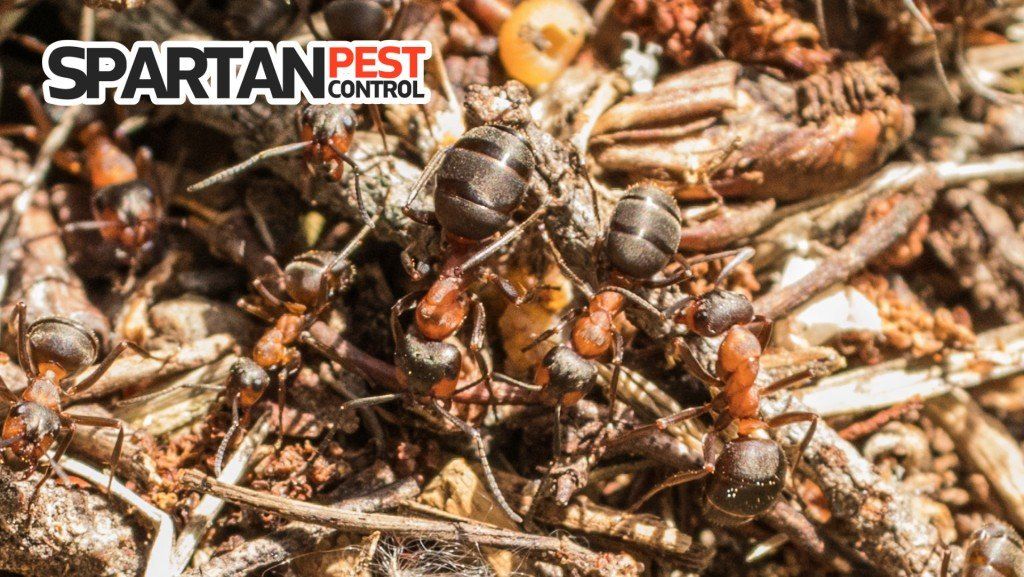
Thatching Ants Facts
1. Thatching ant nests house many insects
Their mounds also contain aphids, beetles, springtails, and more. Many insects will hibernate with ants as they can co-exist.
2. Thatching ant colonies can become super-colonies
If given the space, time, shelter, and food sources, Thatching ant super-colonies can form when multiple ant colonies combine over a large area. There is one in Lehman Hot Springs that has 210 active nests and over 56 million ants.
3. Thatching ant nests are temperature controlled
The plant and soil mixture of their mounds insulates the nest. It is the same temperature year-round.
4. Thatching ants communicate with their antennae
They use their antenna for physical contact and will use them to point with.
5. Thatching ants rely on pheromones
They use pheromones for many different purposes including attracting mates. They also use them to mark common pathways and communicate.
6. Thatching ants are heavy lifters
They can carry between 10 and 50 times their body weight. In contrast, most people cannot carry more than their own body weight. Trained professionals can carry double that.
7. Thatching ants are long-lived
They can live for many years, especially the queens. Colonies can be over 20 years old!
8. Thatching ants lack lungs
They breathe through tiny holes that cover the sides of their bodies. These holes called spiracles work best when an ant is moving.
About Author
John Target - Owner & Operator
My name is John, owner of Target Pest Control. We are now located in Calgary, Alberta and have been providing pest control solutions on the east coast since 2008. I have over 18 years experience in the industry and enjoy the everyday problem solving this industry offers.
You May Also Like

AUTHOR

RECENT POSTS

© Copyright 2024 | All Rights Reserved | Web Design & SEO by Purple Penguin Media
